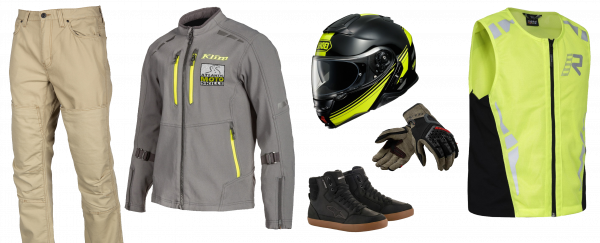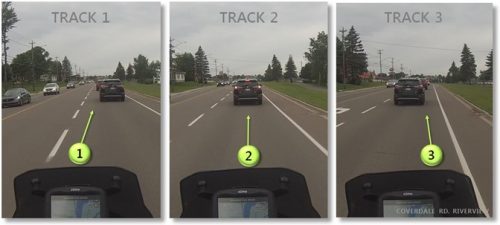Service New Brunswick’s Road Test
So… you’ve had your Learner’s License for over 12 months, and you’re about to take your road test with Service New Brunswick (SNB). Here’s what you need to know before your ride.
Pre-Ride
First, be aware: you are responsible for knowing everything. (!) This might seem like a stretch, but the examiner could test you on almost anything in the handbook. We recommend reading the entire handbook, but at a minimum, re-read Section 8 before practicing for your ride. Click below.
If you have the small motorcycle license (learner’s endorsement “H” or full endorsement “D”), do not ride a motorcycle over 550cc to SNB for the test. Have a licensed rider with an “I” or “A” endorsement take it for you, or trailer the bike.
The examiner may ask about pre-ride inspections. Before riding, they will inspect your machine and ask questions about its roadworthiness. Because New Brunswick does not have annual inspections, they can be quite thorough in this area.
-
Review the Inspection Checklist from Section 8.4 in the handbook and perform this on your motorcycle before your test.
-
They may also ask about riding gear. Know your helmet certifications and wear proper gear. A strong impression of safety-conscious riding can influence the examiner’s perception — they want to see safe riders, not risk-takers. Consider wearing your Hi-Vis motorcycle safety vest, even if one is provided.

The driving test includes the installation of a communication device within your helmet. Having a full faced helmet will assist you in hearing voice instructions. They will be following you in a car taking notes. They will give you ample time to complete each turn. The following are some of the things they may be looking for on this ride:
Motorcycle Familiarity
You should know your bike well. The examiner may ask about the starting procedure — refer to Section 8.5 in the handbook. It’s best to have the bike warmed up beforehand to avoid fiddling with the choke during the ride.
Control
Examiners will observe:
Eye Control – look where you want to go.
Clutch and Throttle Control – smooth, precise application is key.
Braking Control – smooth operation of both brakes.
Shoulder checks – performed at stops and turns.
Poor shifting, abrupt braking, or inattentive eye control can lower your score.
Lane Positioning
Motorcyclists have the ability to position themselves strategically in the lane:
Blocking – for vehicles behind
Visibility – for vehicles in front
Creating Buffer Zones – for hazards and blind spots
Remember: no single lane position is correct in every situation. Use your judgment and adjust according to traffic conditions. Maintain a safe following distance and position yourself correctly for turns. Cancel your turn signal after completing each turn — examiners will be watching.
Exceeding the speed limit is a clear fail.

The examiner may ask you to stop and park on an uphill slope. Steps:
Signal before pulling over.
Stop and perform a shoulder check.
Park with the front of the bike angled slightly outward and the rear tire touching the curb.
Practice this several times before the test.
Relax and Stay Positive
Failing is not the end of the road. Take notes, practice, and return to pass. Listen to the examiner’s feedback — they are doing their job to ensure safe riding. Come back prepared and confident.
One More Hint
The engine displacement of the motorcycle you bring determines the license you receive:
Less than 550cc → Small “D” motorcycle license
Over 550cc → Big “A” motorcycle license
Larger motorcycles require more effort and control, especially at slow speeds tested by SNB. Even though the classification system can be inconvenient, we recommend new riders start on a smaller bike. Modern motorcycles under 550cc are much more comfortable and capable than when the two license classifications were first implemented.
Keep a positive attitude and stay alert on the road. On behalf of the crew at Atlantic Moto Skills, GOOD LUCK!
